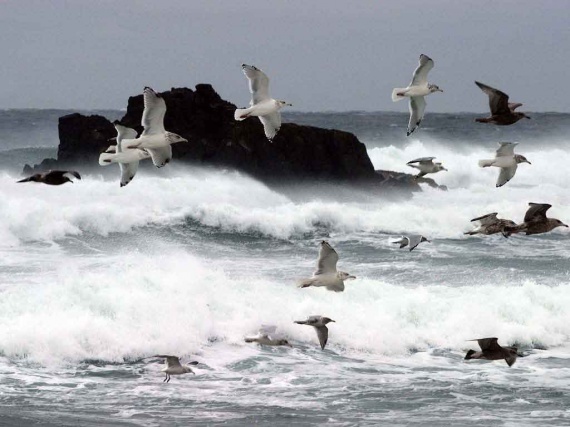
GOALS AND OBJECTIVES
Note : The proposed activities request a set ensemble of cognitive processes (cf. executive/integrative functions) such as attention, memory, planning/organisation, flexibility and inhibition, as well as creativity and imagination.
The same ability can be developed transversally through different domains. The notion of anchoring behaviour is considered on a personal dimension. School content is defined according to the abilities of the child in the beginning of the year. School content and cognitive processes go hand in hand and develop simultaneously.
We start with the children’s actual behaviour (what they do spontaneously) and with the means through which they act (how they do it); their strengths, abilities, resources, emerging acquisitions, possibilities and needs. It is essential to allow the child to make sense of what is learnt and to its content. It is also important to assure generalisation of acquired abilities to different contexts (environments and social encounters) in order to make their expression permanent.
We adopt a dynamic and evolving approach and ensure the coherence of the Route Plan in its entirety.
French: oral and written language proficiency
Oral language
Oral expression
| Action-Goals | + | ++ | +++[1] |
| Give an account of an event or an experience/make a short presentation with structured information: organising the account in chronological order, using references for time (e.g. yesterday, to begin with, afterwards) and logic (e.g. for, because, etc) | |||
| Describe a picture in detail (e.g. recreate the context of a situation) |
Receptive language
| Action-Goals | + | ++ | +++ |
| Develop oral comprehension of a story read by an adult | |||
| Understand extracts from a documentary film |
Written language
Reading
| Action-Goals | + | ++ | +++ |
| Increase verbal repertoire for global recognition of words (familiar/daily content words, function words, writing in lowercase handwriting) |
|
||
| Join syllables autonomously (without relying on the adult’s vocalisations) when decoding a simple word | |||
| Render reading automatic for frequent syllables in French, with the following structures: vowel-consonant (VC), consonant-vowel-consonant (CVC), consonant-consonant-vowel (CCV) (e.g. al, mar, pri…) | |||
| Master reading complex phonemes within words (e.g. au/eau, en-em/an-am) | |||
| Know all the letters of the alphabet and decipher simple words |
Writing
| Action-Goals | + | ++ | +++ |
| Improve control of word size (decreasing visual references such as double lines) and fine-tune letter trace/form (e.g. curves) | |||
| Increase ability to write dictated words automatically | |||
| Memorise the spelling of new words (e.g. visualise and subsequently write a word without model) | |||
| Increase writing speed when copying a short text | |||
| Practice copying words/sentences on the computer |
Grammare, spelling and conjugation
| Action-Goals | + | ++ | +++ |
| Use personal pronouns adequately | |||
| Make noun and determiner agree in a simple nominal group (plural in –s) | |||
| Identify the main components of a sentence elements (nominal group – NG, verbal group – VG, object – O) and put them in the correct order | |||
| Master ability to name the main punctuation marks (. / , / ; / : / « » / ?/ !) |
|||
| Look up a word in the dictionary (using an illustrated dictionary) | |||
| Associate pronouns to the correct verb conjugation forms (e.g. je suis, tu es) and know inflexions for verbs in the present tense of the 1st group (French) + être, avoir and aller. |
German
| Action-Goals | + | ++ | +++ |
| Master the alphabet (respect each letter’s pronunciation) | |||
| Count to 20 | |||
| Learn vocabulary belonging to different semantic groups (e.g. food, family members…) | |||
| Start/participate in a simple everyday dialogue (e.g. greeting) |
Maths and logical reasoning
Numbering and quantities
| Action-Goals | + | ++ | +++ |
| Consolidate numerical sequences while counting in tens and in hundreds | |||
| Acquire ability to numerically write orally enunciated numbers (tens, hundreds and thousands) | |||
| Acquire ability to orally enunciate written numbers (tens, hundreds and thousands)
Enumerate a collection with a hundred objects through organised counting (in groups of 10) |
|||
| Counting in twos, in fives, in tens, in hundreds and in thousands
Counting down from a given number |
|||
| Passing from a number-word (oral or written) to its decomposition into units, tens and hundreds
Passing from decomposition into units, tens and hundreds to the number-word (oral or written) |
Mathematical operations
| Action-Goals | + | ++ | +++ |
| Perform additions in columns with carryover (hundreds) | |||
| Perform subtractions in columns with carryover (hundreds) | |||
| Translate the data from a problem into mathematical operations (addition or subtraction) | |||
| Gain awareness of multiplication with help from problem-situations (iteration situations, such as 5+5+5) |
Space
| Action-Goals | + | ++ | +++ |
| Master the use of the ruler to draw lines, squares and rectangles | |||
| Reproduce a two-dimensional shape through translation (complex figure) or using axial symmetry (simple figure) | |||
| Describe an itinerary within a familiar space by pointing out the starting point, the point of arrival, which directions to take and pertinent cues |
Logical reasoning
| Action-Goals | + | ++ | +++ |
| Solving simple problems based on written or spoken information |
Nature and civilisation
| Action-Goals | + | ++ | +++ |
| Discuss the world we live in according to current events (themes from the newspaper “Le Petit Quotidien”, exhibitions, parties and events) | |||
| Sciences :
– Liquids and solids – Living things – … (evolving throughout the year) |
Social and communication skills, and functional autonomy
| Action-Goals | + | ++ | +++ |
| Understand the implications of social situations in order to react appropriately in a given social situation | |||
| Develop social interactions (alternation, turn-taking…) with directed communication (visual contact, body position, volume of the voice) | |||
| Assimilate the different routines that take place in class (e.g. lining up, getting materials out and tidying them up, raising hands) | |||
| Increase autonomy when following group instructions (retrieve information from an oral instruction, e.g. during class or during physical education) |
Creative thinking and imagination
| Action-Goals | + | ++ | +++ |
| Answer the question “why?” with a variety of responses (e.g. hypothesise, consider several possibilities) | |||
| Invent the outcome of a situation or of a story | |||
| Vary spontaneous actions (find alternatives to a behaviour) |
Attention / Concentration
| Action-Goals | + | ++ | +++ |
|
|||
|
Organisation/Planning
| Action-Goals | + | ++ | +++ |
| Extend the ability to organise own ideas (e.g. when establishing connections between different types of knowledge) | |||
| Develop social autonomy by planning an event (necessary steps to reach a goal, for example visiting an exhibition) |
[1] When assessing Action-Goals, we will use these symbols to represent an emerging ability (+), an ability in course of acquisition (++) and an acquired ability (+++).



